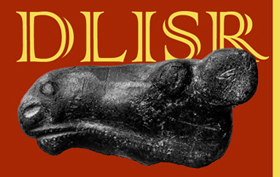Indigenous Science
Resources

| Digital Library of Indigenous Science Resources |
 |

| Introduction | Scope Statement | How to Use DLISR | Participate in DLISR | Credits | Feedback |
What is DLISR? The DLISR is a library collection of online text, video, audio, and image files of Indigenous science. We include in "Indigenous science" both knowledge about the natural world and ways of teaching and learning about it. All DLISR resources are authored and/or produced by Indigenous persons or organizations, or approved for inclusion in the library collection by an elder or other Indigenous person with the expertise to assess the resource. Over 300 resources have already been collected for inclusion and are presently being catalogued. We encourage and appreciate suggestions for additional resources to add after we finish this first set. Many online resources are already individually searchable, but the DLISR is a library where many relevant resources may be searched and retreived at one site. A search result leads the user to the website of the originating organization, just as a card catalog in a physical library leads the user to a published book on the shelf. We do not reprint or reproduce resources. Metadata about each resource -- its author, publisher, date, copyright information, and terms of use (among other things) are provided via the cataloging process. Please be sure to check the copyright information for any resource you use. The first set of resources being cataloged is primarily from SnowChange, Tribal College Journal, and Winds of Change. That means most entries are written text by and about Indigenous peoples of the Circumpolar North and/or of North America. The range of resource variation -- in media, format, places, and peoples -- will increase as we catalogue more online collections into the library. DLISR is a project of Tapestry Institute's Itahoba Science Program, instituted and facilitated by Tapestry staff and the "Digital Library Workgroup," a team of diverse, gifted, and dedicated collaborative consultants. Catalog and search engine software, and library server space, are provided by the Digital Library for Earth Systems Education, DLESE. Funding to establish the DLISR prototype was provided by the National Science Foundation. Please see the credits section for details about the roles of Tapestry Institute, DLESE, and NSF in this project. Credits also contains information about our partners at SnowChange, Tribal College Journal, and Winds of Change. Additional details or information about this project may be obtained by writing Jo Belasco, at jo at tapestryinstitute.org. Return to the DLISR Collection. DLISR is maintained by Tapestry Institute.
|